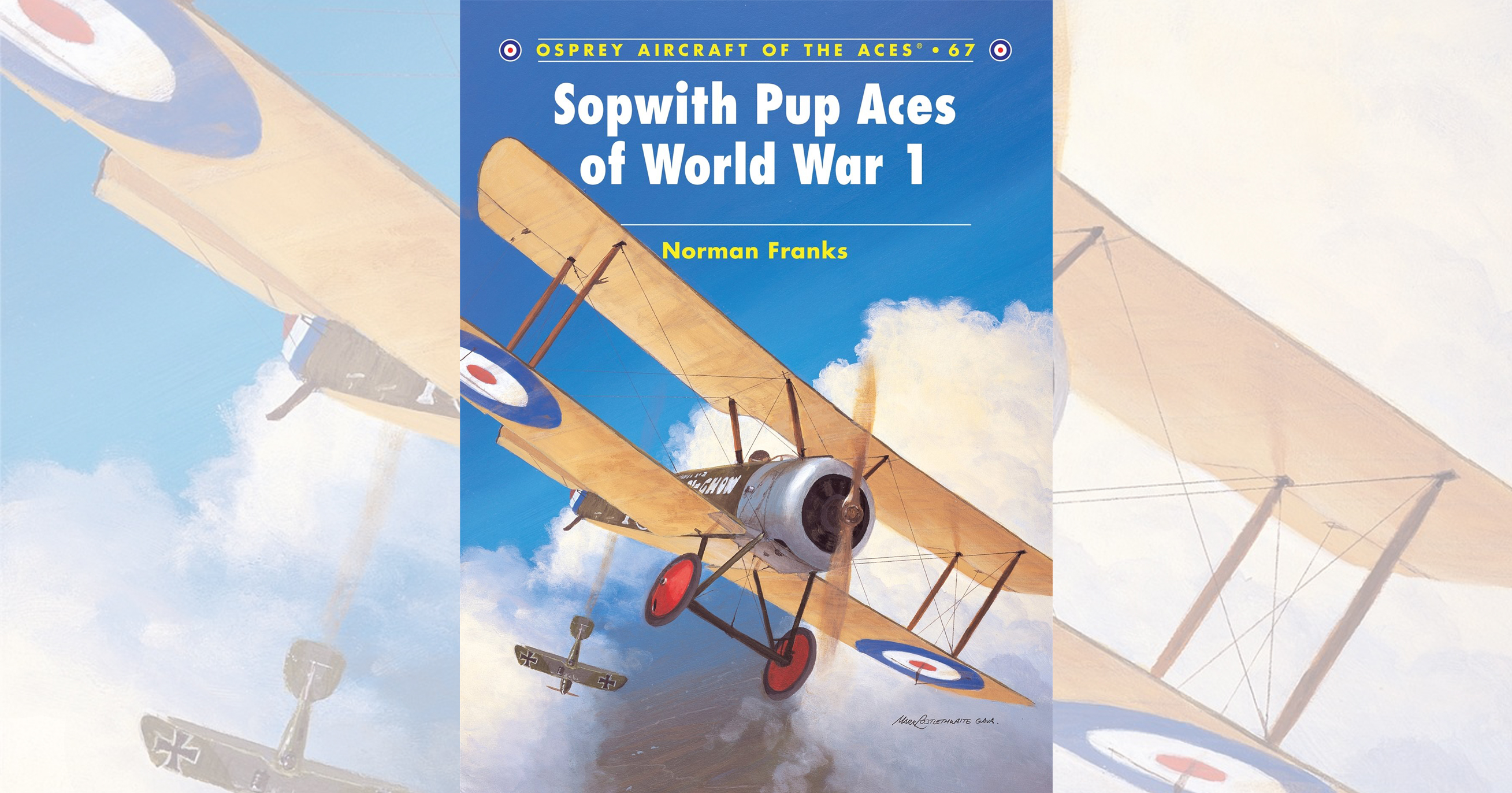Sopwith Pup Aces of World War 1 by Norman Franks, Osprey Publishing, Botley, Oxford, United Kingdom, 2005, $14.95.
Not as famous today as the Sopwith Camel, the Sopwith Scout—more popularly known by its unofficial sobriquet of Pup—was regarded as an aeronautical masterpiece in 1916, when its pilots universally praised it for looking right and flying right. As with most Sopwiths at the time, the Pup was originally built for the Royal Naval Air Service squadrons, but the early success and reputation it acquired led to its being adopted by Nos. 54, 46 and 66 squadrons of the Royal Flying Corps as well. By the spring of 1917, however, the predominance of German fighters with twice the weaponry and triple the firepower offered by the Pup’s single synchronized Vickers machine gun led to its swift replacement by the faster and nimbler—but much less forgiving—twin-gunned Camel.
In Sopwith Pup Aces of World War 1, author Norman Franks, long in his element with British aces in general, presents the exploits of the RNAS and later RFC Pup aces in roughly chronological order up to September 1917, when the remaining Pup squadrons were heroically carrying on in spite of the fact that the state of the art had passed them by and their mounts were overdue for replacement. A few famous names such as Australian ace of aces Robert A. Little and 60-victory Canadian ace Raymond Collishaw coexist with Joseph S.T. Fall and Maurice D.G. Scott, the top-scoring Pup pilots with 11 victories each, and a lot of lesser-known aces who deserve the recognition they receive. The latter includes an aggressive teenager from No. 66 Squadron with the almost fictional-sounding name of Walbanke Ashby Pritt, who on August 16, 1917, staged a lone attack on a German airfield in which he shot down two Albatros D.Vs as they took off after him. During a later ground-strafing mission, finding the occupant of a German staff car gallantly engaging him with a pistol, Pritt fired back with his Very pistol.
Modelers may be disappointed by the relatively sparse 16 side profiles and four upper views that make up the color section in this entry in Osprey’s Aircraft of the Aces series. The selection includes some colorful examples, however—the most garish by British standards being naval. Extensive appendices include the scores of the more noteworthy aces in detail and a description of dogfighting and formation tactics for the Pup written by one of its earliest pilots, Flight Lt. C.R. Mackenzie of No. 8 Squadron, RNAS, lent a note of sadness by the fact that Mackenzie was killed in action not long afterward, on January 24, 1917.
Although the Camel was more formidable and famous than its forebear, it was not remembered by its pilots with the unqualified affection that was reserved for the Pup. Sopwith Pup Aces of World War 1 does fair justice to a fighter that provided the British with a competent counter to the first Albatros fighters when they needed one in late 1916, as well as to the courageous men who flew it.
Originally published in the March 2006 issue of Aviation History. To subscribe, click here.





